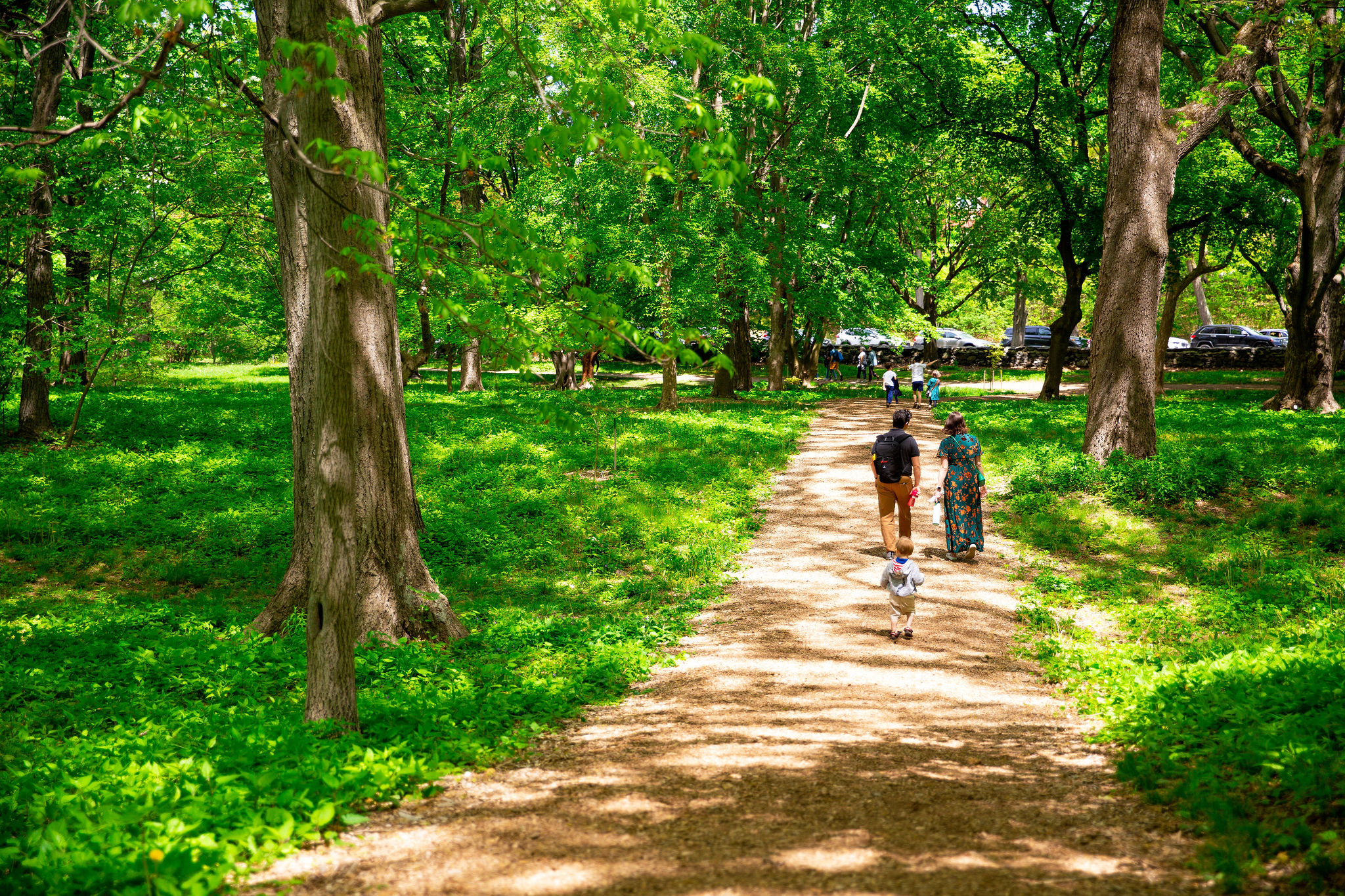The Arnold Arboretum was founded on a set of democratic ideals, creating an enduring landscape dedicated to public access. Approaches toward meeting these ideals have ranged over the past 150 years, and we are continually reassessing and refining our efforts. It’s a work in progress.
So far, our efforts have centered around three conversations: increasing access to our landscape and programming; fostering inclusion in our community, from staff members to first-time visitors; and reckoning with our history. We created these pages to document our ongoing work toward equity at the Arboretum. If you have feedback or questions, we’d love to hear from you.

Access
As an urban public park and resource, we are working to make our landscape and programming more accessible to historically under-resourced communities, some of which border the Arboretum. Through partnerships with underserved groups and targeted outreach to neighbors, we’re trying to remove barriers to engagement.

Inclusion
Once folks have reached us—whether they’re attending a program, joining our staff, or visiting the landscape—we want them to feel welcome and empowered. We’re working to amplify welcoming across the Arboretum. These efforts include reimagining our entrances, programming aimed at under-reached communities, and interdepartmental working groups dedicated to diversity, inclusion, belonging, and accessibility.

Reckoning
The story of how we got here—the history of the Arboretum—extends far beyond the past 150 years. We’re working to convey a fuller picture of the history of this land, the people who contributed to the creation of the Arboretum, and our actions over the past century and a half.
